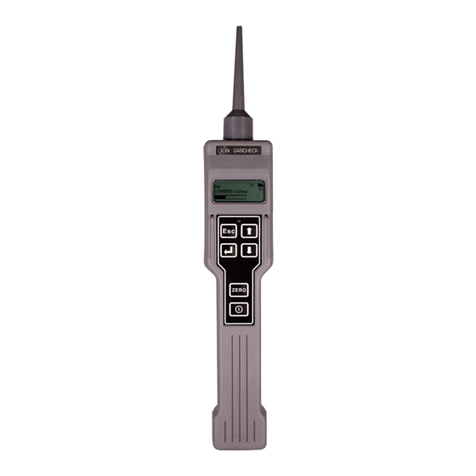GasCheck Tesla Instrument User Manual V1.2R
Page 4 of 26
Contents
Declaration of conformity..................................................................................................................................... 3
Statements........................................................................................................................................................... 5
Safety................................................................................................................................................................................5
Quality Assurance.............................................................................................................................................................5
Responsibility of use.........................................................................................................................................................5
Disposal ............................................................................................................................................................................5
Calibration Facility............................................................................................................................................................5
Legal Notice......................................................................................................................................................................5
Instrument Description......................................................................................................................................... 6
Packing list ........................................................................................................................................................... 7
How GasCheck Tesla works ................................................................................................................................... 8
Thermal Conductivity .......................................................................................................................................................8
Instrument main menu ......................................................................................................................................... 9
Running screen....................................................................................................................................................10
Gas selection ..................................................................................................................................................................10
Sensitivity .......................................................................................................................................................................10
Battery status .................................................................................................................................................................10
Backlight .........................................................................................................................................................................10
Gas measurement ..........................................................................................................................................................10
Sound indication.............................................................................................................................................................10
Bar graph ........................................................................................................................................................................10
Peak hold........................................................................................................................................................................10
Functions ............................................................................................................................................................11
Contrast..........................................................................................................................................................................11
Backlight .........................................................................................................................................................................11
Sound..............................................................................................................................................................................11
Peak hold........................................................................................................................................................................11
Calibration ......................................................................................................................................................................11
Battery selection ............................................................................................................................................................12
View Data .......................................................................................................................................................................12
Units ...............................................................................................................................................................................12
Display ............................................................................................................................................................................12
Gas selection ..................................................................................................................................................................13
Getting started ....................................................................................................................................................14
The Keypad.....................................................................................................................................................................14
Using GasCheck Tesla...........................................................................................................................................15
The GasCheck Tesla instrument.....................................................................................................................................15
GasCheck Tesla fan current monitor .....................................................................................................................16
Probe options......................................................................................................................................................17
Detecting leaks....................................................................................................................................................18
Overview ........................................................................................................................................................................18
Calibration ..........................................................................................................................................................19
Over view........................................................................................................................................................................19
Selecting Factory or Custom Calibration........................................................................................................................19
Calibration procedure using 'ppm' units........................................................................................................................19
Calibration procedure using 'cc/sec' units .....................................................................................................................20
Replacing batteries..............................................................................................................................................21
Instrument specification ......................................................................................................................................22
Replacement parts ..............................................................................................................................................23
Instrument warranty and service..........................................................................................................................24
Warranty ........................................................................................................................................................................24
Service ............................................................................................................................................................................24
Contact details................................................................................................................................................................24
Manual log..........................................................................................................................................................25




























